Wild Oats-A Useful Nervine

This is a monograph about oats, the same plant that oatmeal comes from, but the focus here will be on how it is used medicinally.
One thing that can be said about this plant is that unless you have a specific oat allergy, it is a very safe, nutritive plant. As such, a wide variety of people, including those who are often sensitive to other medicines, can use it. It is one of those plants that straddles the line of ‘is it a food, or is it a medicine,’ which is often arbitrary anyway.
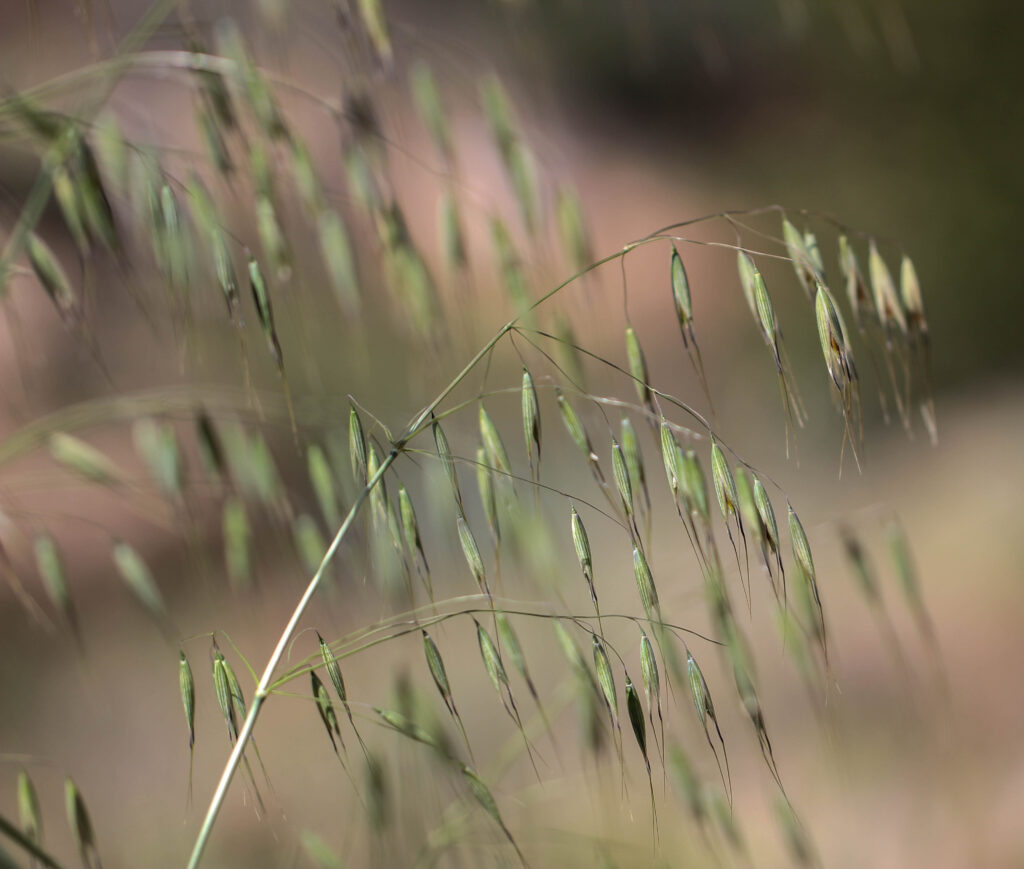
Avena Nomenclature
There are a couple of common names for Avena, depending on which part of the plant is being used. The mature seeds are the part used for food and, depending on how they are processed, are called oats, oatmeal, rolled oats, etc. In herbal medicine, the immature flower heads and the stems and leaves are the main parts used. When the immature flower heads are prepared as a tincture, it is called fresh milky oat tops or milky oats. This is due to the white starch that is exuded from the flower head at this phase of the plant’s development. It is the preferred time to tincture the Oats. The terms flower head, flower top, and seed head are used interchangeably here.
The other parts of the plant employed for medicine are the dried stems (technically called a culm), leaves, and seed heads. These are generally for tea and are called oatstraw or wild oats.
It is strange to see a few ounces of the dried plant material being sold for medicine and then driving past large planted fields of Oats sold as fodder for a fraction of the price.

The awn can stick into fur and transport the seed.
The stamens produce pollen, and the stigma catches pollen.
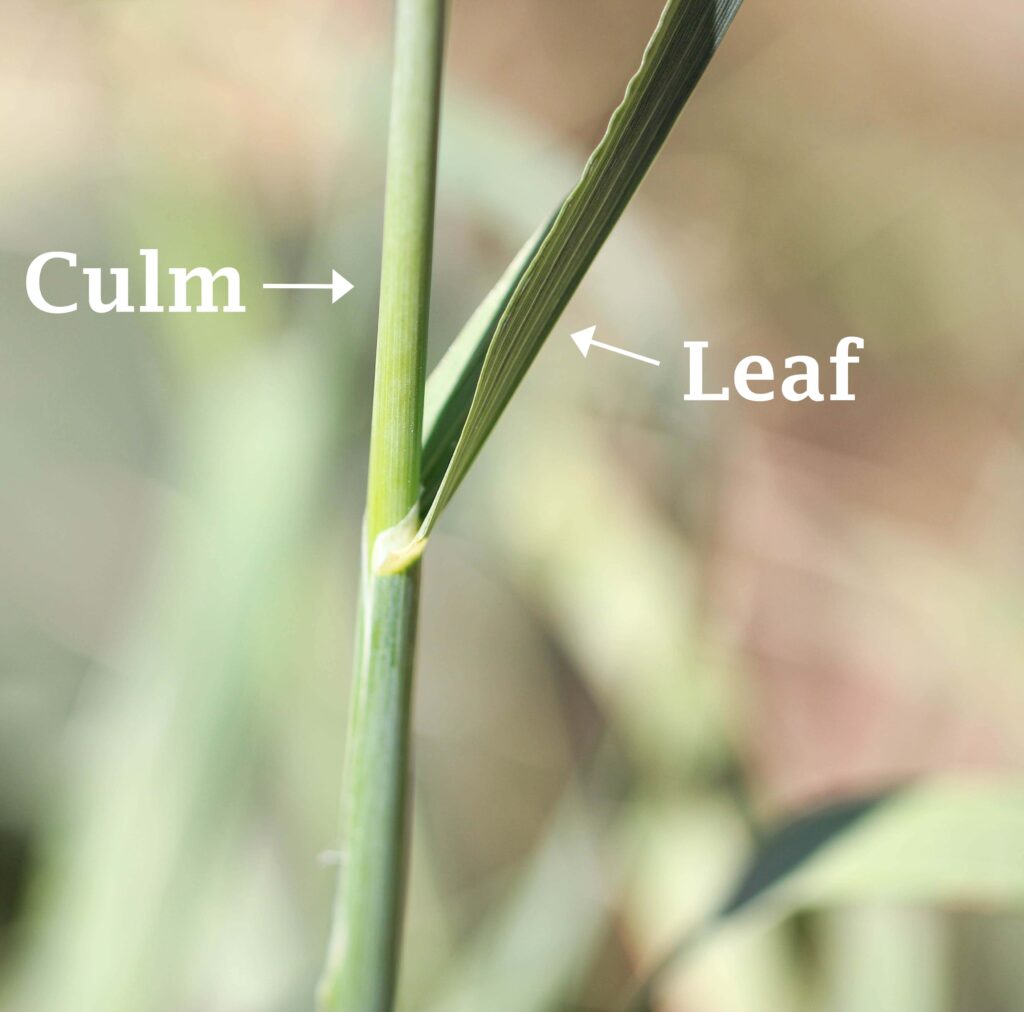
between the culm (stalk) and leaf.
Botany
Avena is in the Poaceae (also called the Gramineae), the grass family. This is one of the largest family of plants and has one of the widest distributions. This family contributes a significant portion of the human diet and includes Rice, Wheat, Corn, Sugar cane, Sorghum, and Rye, along with others. The grasses have distinct botanical characteristics, though a few other plant families have a ‘grass-like’ look, such as Sedges (Cyperaceae) and Rushes (Juncaceae). It is too technical a family to cover the details here, but the accompanying photos of Avena barbata show some details. One photo shows a spikelet (the inflorescence) containing 2 florets (small flowers). The dangling parts (yellow on a thin string) are the stamens. Each floret has 3 stamens. And the feathery part is the stigma, where the pollen will be caught. The whole spikelet is the part that will eventually mature into the milky oat top.
The other photo shows the difference between the culm and the leaf.
The most commonly cultivated Avena species for food is A. sativa (and its cultivars). If you see large fields of oats, it will be this species. The plant is also grown as a cover crop or animal food and bedding.
There are two weedy species that are probably useful as well. They look very similar to Avena sativa, and one would need to botanize them to see the differences. I don’t know if anyone purposefully gathers them, but they taste similar and probably are just as beneficial. These are Avena fatua and Avena barbata, which I commonly see growing along roadsides
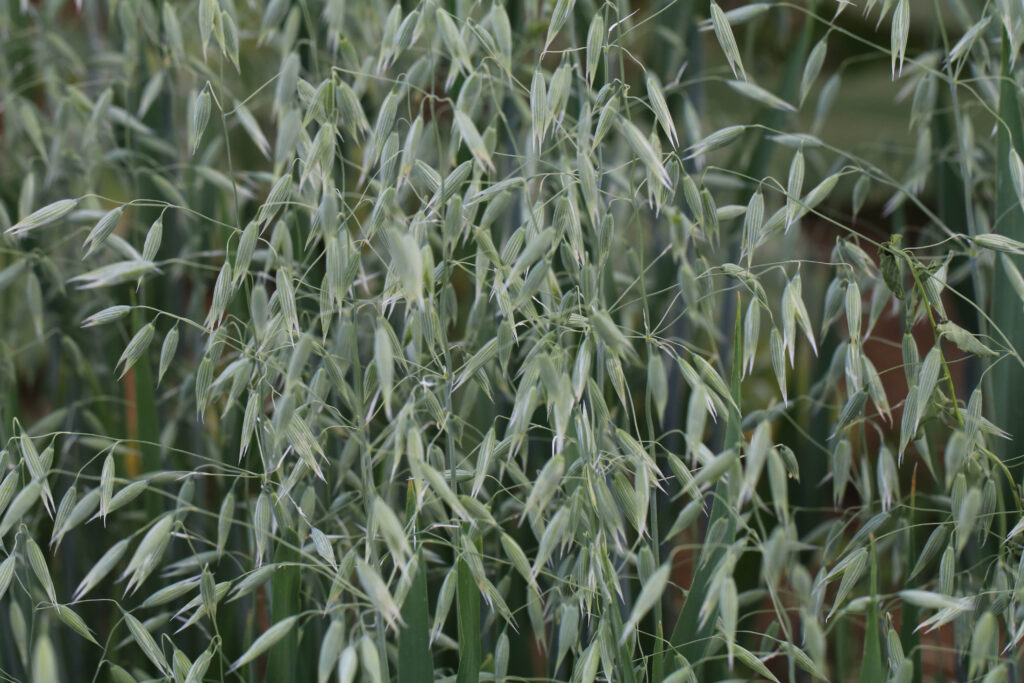
Wildcrafting and Gathering
None of the Wild oat plants (Avena species) are native to North America. The most likely place one will gather Avena sativa is from farms and gardens. The plant has a distinctive green color and, once learned, can be easily spotted while driving along. You can then ask the folks growing it if they wouldn’t mind you gathering some of the tops. This will likely bring incredulous looks (which the herbalist should be familiar with by now). It shouldn’t impact their crop, and you may get permission to pick some of the flower tops. You may want to find out if the crop is sprayed. The second place to find Wild oats is along roadsides, where you can see any of the three mentioned species.
These are often small patches and difficult to gather enough for medicine. Also, they may contain roadside yuckies.
I ask my organic gardening friends if they will grow a row for me, as it is pretty easy to cultivate. I often trade herbal medicine with local farmers for these favors.
Few tools are needed for gathering this plant. First, make sure it is the right time to gather the plant. It is easy to test; just squeeze the immature flower top, and a medium-thin white fluid will emerge from the base. (Those of you who enjoy pimple popping will like this aspect.) Not all of them will exude this fluid, but a majority should. Now, it is time to gather. Bring a paper grocery bag and turn down the sides so that it can stand upright. Or use a 5-gallon bucket. I walk along the rows, using both hands in a loose fist, and drag my hand upward along the stem gathering the oat tops. It takes a bit of practice, and initially, you will be pulling Oat plants out of the ground. It takes a while to fill a bag, but that will be a good amount of medicine, depending on what you are going to do with it. You may also want to bring pruners to cut a number of stalks and dry them for tea.
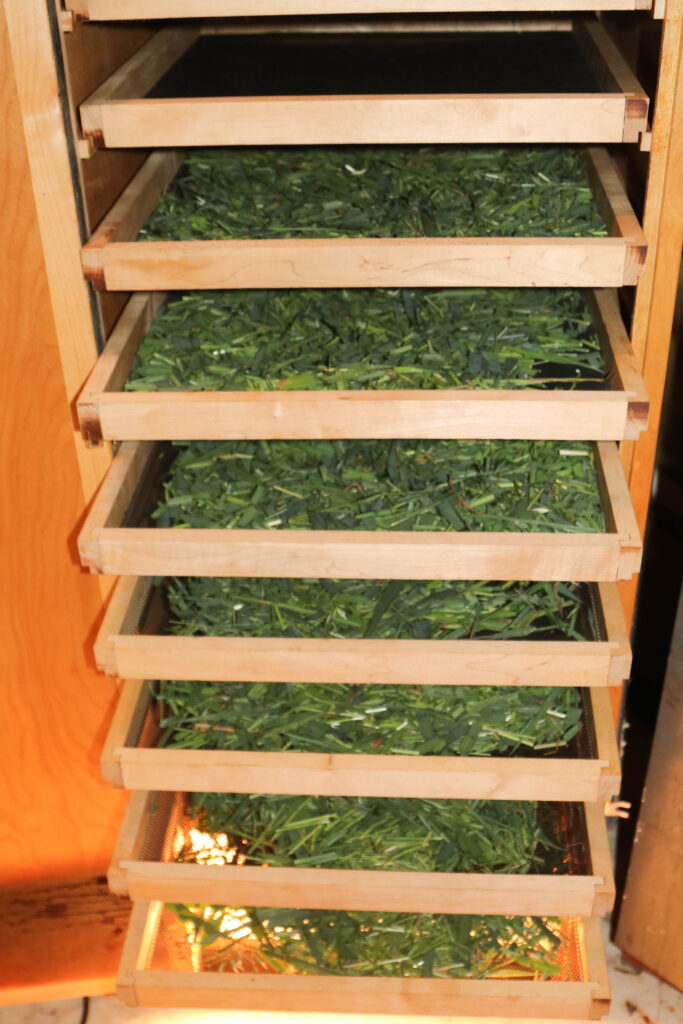
Processing, Medicine making, and Preparations
Avena can be dried for tea or prepared as a tincture or glycerite.
Freshness is important if preparing fresh, milky, immature seed tops. I set aside part of the day that I will be gathering them as that is also the day I will prepare them as medicine. The best way to obtain their medicinal value is by blenderizing the fresh plant material in a blender. This works well as the oat tops are light and bulky and take up a lot of room in a jar. The blender breaks down and condenses the plant material so that less alcohol is required, allowing for a more potent medicine. I use a Vitamix blender, which is pricey, but I think they are worth it. I blenderize the tincture at 1:2 in 80% ethanol, which turns the tincture into a psychedelic lime green color. For the glycerite, I blenderize the fresh tops at 1:3 in vegetable glycerin. With the dried (rather than fresh) tops, I blenderize them at 1:5 in 40% alcohol.
If you do not have a blender, you can double-macerate the fresh tops. If you grow the Oats at your home, this works well. Gather the amount you need to tincture at the earliest date when the oats are at their milky stage. Press them firmly into a jar and cover with 80% ethanol. In about a week, press them out (in a tincture press if possible). Now, gather another batch of fresh milky tops. Cover them with the liquid (menstruum) you just pressed out. You may need to add some more alcohol to cover them. This should make the tincture substantially stronger than just tincturing them once. It is helpful to have a tincture press to press out as much liquid as you can from the plant material. Tincture presses help recover the greatest amount of fluid for most tinctures.
Another way to prepare Oats is as tea. This is done by drying the culm, leaves, and tops. Warning: the culms (the thicker part of the stem bearing the leaves and flowers) mold easily even after they seem dry. I have had this happen a few times. Cut the culm up into small pieces and dry them in a dehydrator for an extended period. I suggest inspecting the plant material after a few weeks to make sure they did not get moldy.

This is the preferred time to prepare the plant as tincture or glycerite.
A Messy Processing Story
Some years back, I was on a class field trip to the Adirondacks, staying with my friend Paul. While we were in the area, we also visited Jean Argus of Jean’s Green’s, who let us pick a whole bunch of Avena she had sowed. So we gathered the milky tops and brought them back to Paul’s home, and I asked if I could use his blender to process them.
Before I go further in this story, it is important to know that Paul had just finished building and painting his kitchen (a bit of foreshadowing).
I was blending the oat tops and adding the alcohol when…woosh, the blender top flew off, and the Avena flew out. The tincture splattered on the recently painted walls, leaving them that phosphorescent lime green color. It stained all too well, and Paul had to re-sand and re-paint the areas where the accident occurred. Fortunately, I was with one of his relatives, and so the blame was shared between us. If you are reading this, Paul, once again, I apologize and thank you for letting me take my students to your lovely homestead.

Medicinal Attributes
The main medicinal attribute of Avena is as a nerve tonic. A tonic is a medicine that contributes to one’s health when taken regularly over time. With Oats, it is for its nerve restorative properties rather than acting as an on-the-spot first aid plant (such as Skullcap). It does not have dramatic action but works slowly and consistently to help as a nervous system restorative. Oats is particularly helpful when feeling frazzled or burnt out after going through a stressful time.
This can lead to a feeling of constant fatigue even after rest or sleep. It can also leave one feeling out-of-sorts, with difficulty concentrating or feeling disconnected. Other symptoms include headaches, difficulty sleeping, and irritability. It takes multiple approaches to help with these situations, but Avena can be a beneficial part of helping people feel better. I often see burnout from people who are active in community and egalitarian work. Initially, the individual has a lot of energy for their project, but over time, they take on ever more responsibility, which can lead to burnout. (Raise your hand if this has ever happened to you or someone you are close with.)
While Oats will not alter the situation, it can help the individual eventually feel revived. The fresh milky oat tincture is stronger than the tea, but both can be taken as needed.
The tea, like the food, is nourishing and mineral-rich and can be beneficial for anyone.
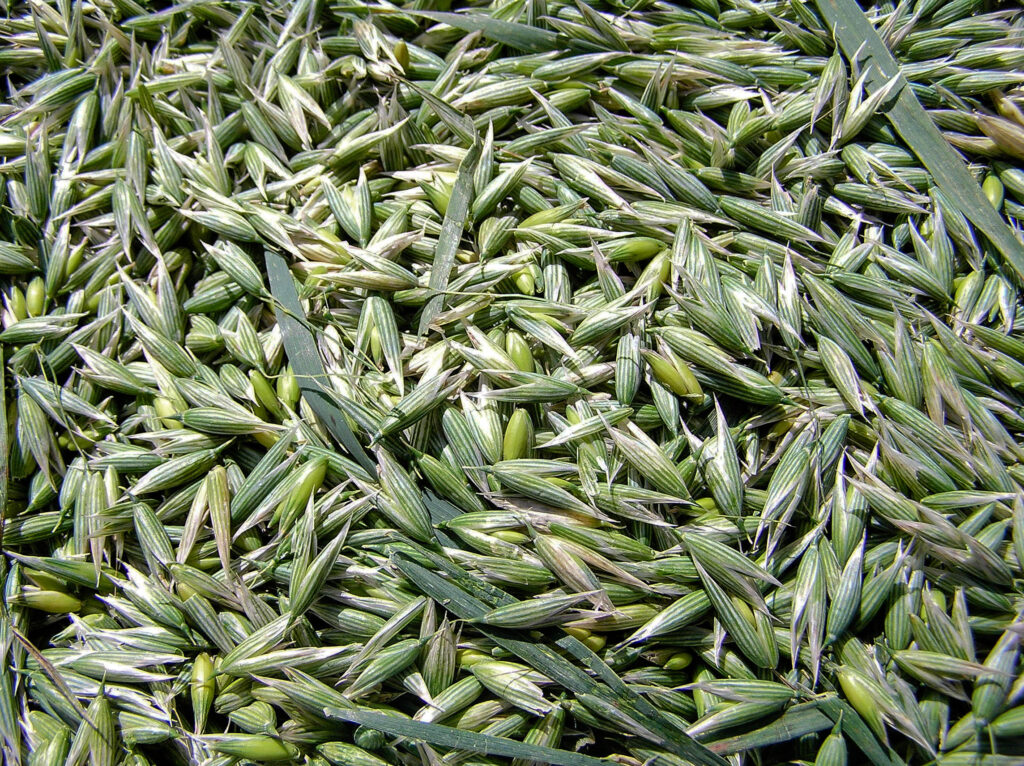
Dosage
Avena preparations are some of the safest nervine remedies. While they don’t have the punch of some other herbs, they rarely leave one feeling addled or tired. The amount taken is very individual and based on how helpful it feels. My suggestion is to take the tincture on a regular basis. Schedules can help bring order to a scattered mind, so consider using the tea or tincture at the same time each day.
The dosage for the tincture is somewhere in the range of 1 to 2 dropperfuls (2-4 ml). This can be taken regularly or as often as needed, taking larger amounts when troubling circumstances lie ahead (or behind).
Oats combines well with other nervine tonics such as Passionflower (Passiflora incarnata), Blue vervain (Verbena hastata), Tulsi (Ocimum tenuiflorum), Rose (Rosa species), and Wood betony (Betonica officinalis).
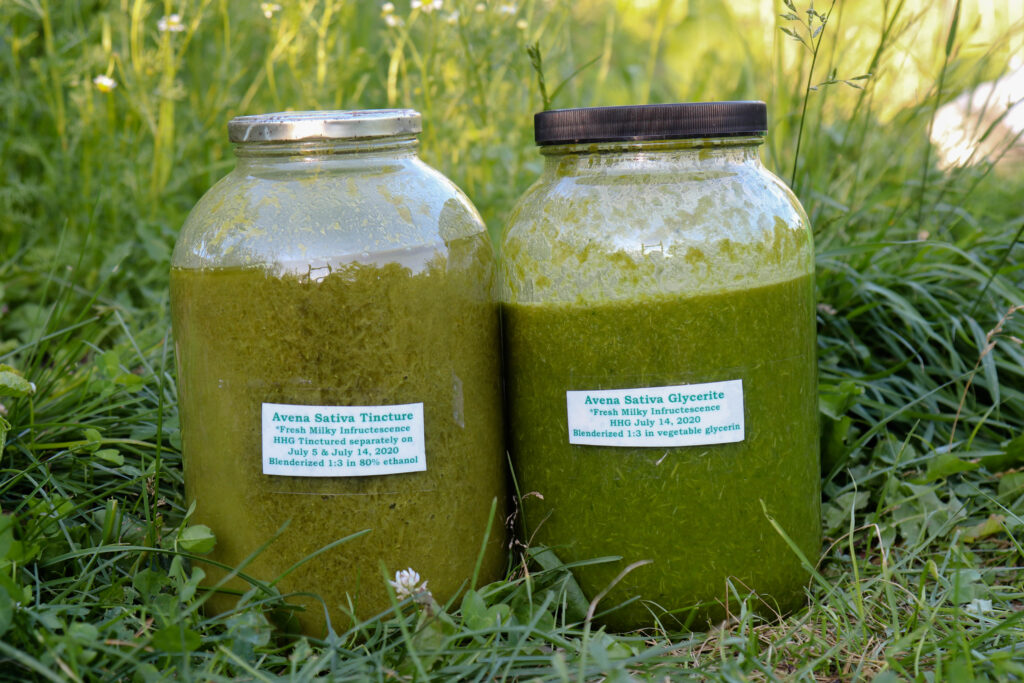
Summary
I hope this monograph gives insight into using this safe, easily prepared, non-endangered plant. Just drink a few cups and see if you like its oaty flavor, and perhaps you will find it a helpful nerve restorative.
